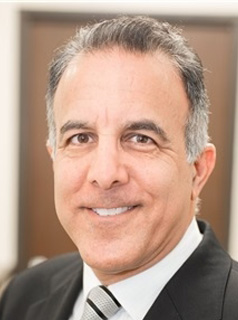It's a Virtual World Out There: The New Dawn of Telemedicine
 Ever needed a doctor’s excuse note for school or work but didn’t want to invest the time and money to actually visit the doctor? Now you can find a printable doctor's excuse online, through websites that specialize in online doctor consultations, also known as “telemedicine.” Telemedicine has made it possible to communicate with doctors via telephone and online. The industry has paved the way, for a new future in medical consultations using the infrastructure already in place and resources that people already use every day.
Ever needed a doctor’s excuse note for school or work but didn’t want to invest the time and money to actually visit the doctor? Now you can find a printable doctor's excuse online, through websites that specialize in online doctor consultations, also known as “telemedicine.” Telemedicine has made it possible to communicate with doctors via telephone and online. The industry has paved the way, for a new future in medical consultations using the infrastructure already in place and resources that people already use every day.
With the ease and accessibility of the Internet in the Information Age, it is only logical that necessary services such as healthcare utilize new technologies for increased efficiency. Services that provide online doctor consultations and online prescriptions exist with the understanding that telecommunications is a tool to improve the service that the health care industry provides. The scope of telehealth ranges from consulting a doctor on the phone to receiving prescriptions over the Internet. It has already been implemented into many health care systems, and is quickly growing.
What has made online doctor consultations and prescriptions services possible?
Online doctor consultations and prescriptions, also known as telemedicine, has become possible with the spread of information technology. With the encompassing network that the Internet provides, it is now easy to connect people with hardware and even wirelessly through buildings, linking communities and countries worldwide.
Before websites offered online doctor consultations and prescriptions, people had to travel to a doctor’s office, or have a doctor come to them to obtain health information. With the increasing costs of healthcare, diagnosing illness can be expensive and time consuming, on top of the cost of treatment. Now information regarding your personal health can be obtained, transmitted and stored digitally. The American Medical Association has stated that 70% of doctor’s visits are informational in purpose only, and could easily be handled over the Internet or phone.
How Does Telemedicine Affect My Life?
There are several telemedicine services that provide online consultations, diagnoses, prescriptions, and doctor's notes for school and the workplace. This makes this service ideal for people who travel, such as business people, those in transportation industries such as pilots and train operators, students, and just people on the go. For example, those who do not have the time to make an appointment for a small ailment could be easily treated online, for faster relief at their convenience.
The Future of Telemedicine
In the coming years, it is a priority in the health industry to make telemedicine, or online doctor consultations more accessible and affordable for personal use at home. Already many accommodations have been made to provide affordable equipment to consumers. Online doctor consultations will be available to more and more people, as the number of personal computers and mobile phones with Internet access increases exponentially all over the world. Meaning, people in remote areas without readily available health services and resources will be able to access health treatment through technology. Greater access and efficiency of the health care industry will positively influence people's quality of life. Telemedicine vastly improves customer and patient satisfaction with the online consultation services they receive overall.
In fact, the Internet has become home to a growing number of online doctors. Many medical practices now offer their patients the ability to go to their website and set up appointments for telephone or videoconference consultations. This type of technology can be very helpful in rural communities or in areas that are hard to reach, and when used correctly, has the ability to save many lives.
Different to the Old Days?
Well, not necessarily the old days; while online doctors are definitely growing in popularity, there is still the need for traditional visits to the doctor's office. However, by understanding the whole process that is involved in making appointments and visiting your physician, you begin to realize just how effective telemedicine can actually be for all patients.
When the patient gets ill or needs to get a prescription refill for an existing condition, the process of making an appointment and visiting their doctor is the same. You can soon see how this approach can be very inefficient, both for the patient and for the doctor.
For the patient, already knowing what their illness is and simply having to get a refill on their prescription means that making that call and visiting their doctor can actually be a waste of time and gas money. This can also be a problem if the patient happens to be out of town or on holiday and forgot their meds at home. It would be virtually impossible for them to visit their doctor on time in order to get another prescription.
For the doctor, it means having to prevent another patient, that actually needs a full physical consultation, from making an appointment, because that particular appointment has been taken up by the other patient who simply needs a prescription refill.
In fact, according to research that was carried out by the American Medical Association, close to 70% of visits to the doctor's office are for information purposes only, or for matters that could have easily been dealt with by telephone. So when you consider these facts, you can see how telemedicine can provide an alternative service, such as those offered by online doctors, in order to take care of this facet.
Online doctors are able to solve this problem very easily. The patient simply needs to go online, make an appointment with their doctor, who will then contact the patient via telephone or videoconference, and then provide the necessary prescription refills, which the patient can then take to any pharmacy within his or her area in order to get the necessary medication.
There Is More to Online Doctors than Offering Convenience to Their Patients
Licensed online doctors offer very important services to their patients, and when it comes to offering prescription refills, those who benefit from the service the most are those that suffer from serious health conditions.
For example, a patient who suffers from asthma needs to be able to easily get a prescription refill for their medication, and if they are not able to get to the doctor on time because their location prevented them from doing so, they could be in serious trouble health-wise; and the same goes for a person who suffers from high blood pressure. An online doctor will allow patients who suffer from these conditions to easily go online and get their prescription refills, regardless of how far away they are from the nearest hospital or doctor's office.
Precautions Must Still Be Taken When Looking for an Online Doctor
Unfortunately, the growing demand for Telemedicine has also attracted unscrupulous business practices, which has led to the rise of unlicensed services that also claim to offer online prescription refills and doctor consultation. Patients are therefore advised to do careful research before utilizing any of these services.
In order for a physician to offer this type of service, they have to be fully licensed in the United States. This ensures that these practices stay compliant with the Medical Board Regulations, especially when it concerns prescribing medication on the Internet. In addition, these regulations have also been put into place to ensure that the patient's privacy is protected, and so these online medical services have to abide by the Health Information Portability and Accountability Act and Personal Health Information laws.
Keep in mind that there are also limits to the type of diagnostics and treatments that can be achieved through an online doctor’s consultation. However, the fully licensed service understands these limitations and risks, and will ensure that their patients understand this as well.
The Process That Is Involved When Utilizing the Services of an Online Doctor
In order to utilize the services that are provided by online doctors, the patient first has to create an account, which is usually free. At this point, they will then make payment for the consultation. After payment has been processed, the patient will then be directed to another page on the website where they are required to fill out their medical history. Once this form has been submitted online, a physician will then call the patient back within 30 minutes, by telephone. At this point, the consultation is then carried out via telephone. Once the consultation is over, and if needed, a prescription refill will then be called into the patient's local pharmacy. Currently, this is the most effective method of ensuring that a patient gets consultation that is both legal and accurate, and that the medication is obtained through all the legal channels as well.
Telemedicine has evolved quite a lot from what it used to be, and with the Internet currently being the main driving force behind its success, patients, and doctors alike, are able to enjoy a much more efficient, accurate and convenient approach to medical care.
Telemedicine is a Way to Bring Modern Healthcare to Remote Areas
Enter telemedicine. Telemedicine is not a unique specialty of medicine, rather, it represents the use of products and services in order to more efficiently deliver high quality care. In its purest sense, telemedicine is defined as a method employing electronic communications to convey information from site to site, in order to support enhancements in a patient’s clinical wellbeing. The tools employed may include a variety of communication modalities, including multi-way video, e-mail, wireless devices and an evolving suite of electronic technology.
Telemedicine had humble roots. Beginning in the 1970s as a way to bring modern healthcare technology to remote regions of the world, this new-age form of practice gradually developed into a convenient form of healthcare. More recently, as the technology continuously evolves, telemedicine has become ubiquitous throughout the healthcare arena (American Telemedicine Association, 2013).
Leaps in Technology Fuels Telemedicine
The spread of telemedicine is fuelled by leaps in technology. Some of the most innovative forms of advancement include:
2D Videoconferencing – Two dimensional (2D) videoconferencing is quickly becoming the industry standard. This technology, commonly used in desktop videoconferencing, can be accommodated fairly routinely with the existing data infrastructure, and it allows the simple sharing of images. 2D videoconferencing permits for a remotely based physician to “interview” his or her patient, look at diagnostic images and view medical records. The downside of this technology is that it suffers from a sense artificial being: It does not increase “social presence.” The way someone feels connected with another person is social presence. This is often interrupted with a telecommunication interface (Hauber et al., 2005).
State of the Art Videoconferencing – In a study of 42 individuals in 2005, Dr. Hauber and associates found significantly higher levels of social presence with the use of three-dimensional (3D) videoconferencing. This was compared to 2D videoconferencing, which did not allow for such social presence. When applied to the actual practice of telemedicine, these findings are paralleled by reality. While 2D videoconferencing is the norm in many settings, leading more and more professionals to use this technology, an open question remains: Is a more intense and lifelike technology necessary for telemedicine to progress to the next level?
High Definition (HD) Video – Usually defined as 1280*720 pixels or (720p) per frame, HD video provides a very fine-grained video image. This results in a high quality viewing experience. Three-dimensional (3D) video relies on an illusion of depth perception, which encompasses recording an image as seen from two different perspectives. The images are then melded together using specialized production hardware to provide the illusion of depth.
While these technologies have become all of the rage in the motion picture industry, the combination of HD and 3D (HD3D) may well have an important role to play in the practice of telemedicine. Multiple investigations of the technology suggest that the use of HD3D enhances the degree of cognitive immersiveness (or sense of being there) experienced not only by the physician, but also by the patient. On its own, this may lead to better outcomes for telemedicine.
Areas of Practice Could Be Improved by Telemedicine Technology
Further to the enhancement of the patient-physician encounter, HD3D, with its increased video quality attributes, has the potential to open other areas to telemedicine that may have been previously limited by the technology. These include:
• Surgery –Stereoscopic laproscopic surgery is becoming commonplace, with the belief that it may permit more accurate cutting and suturing. Another obvious application would be simulation for training, or consultation, in real time with offsite surgeons.
• Wound Care – Chronic wound infections are responsible for a great amount of morbidity and economic burden. Certain patients can benefit immensely if assessment and treatment by appropriate wound care specialists. Recent research in Australia demonstrated that clinical assessments made using HD3D technology and live, in home assessments were similar in quality. By keeping the wound specialist busy making assessments, rather than traveling from house to house, productivity increases.
• Oncology –A tele-oncology application involves the patient attending a remote chemotherapy session and participating in a HD3D consultation with a remotely based oncologist. HD3D would enhance the experience by providing a greater feeling of “being there” than is possible with 2D technology. Experts believe that the success of an oncological interaction is dependent on human interaction factors, so anything that can improve the quality of the meeting should be beneficial. One potential downside of this approach is the need to wear HD3D glasses. It is possible that the use of these glasses may diminish the quality of the interaction due to the importance of body language cues, which may suffer from the use of these devices.
• Psychiatry – While many of the same issues for oncology also apply to psychiatry applications, there are some differences. First, unobstructed eye contact is not as important in the practice of this specialty. Secondly, many psychiatric evaluations require the assessment of fine motor movements, a need well served by HD3D.
Healthcare Costs 15% of all Money Spent
Recently, President Obama surprised many with a bold proclamation that the biggest threat to the U.S. bottom line was not insolvent banks, paralyzed credit markets or trillion dollar bailouts, but rather the skyrocketing costs of modern healthcare. Healthcare costs account for over 15% of the money spent in America, and this number is climbing twice as fast as the current rate of inflation. In response to these mind boggling costs, medical scientists have been hard at work building a suite of novel and innovative medical solutions, designed to help pare these costs down to more manageable levels.
Convenience and Cost-Savings Drive Online Medicine
Telemedicine came about over 30 years ago, using what would now be considered ancient technologies. Led out by exploding levels of bandwidth, the state of the art in telemedicine is becoming increasingly sophisticated. One market research firm recently projected that while roughly $3 billion was spent on telemedicine in 2010, the figure will grow to nearly $8 billion by 2015. In addition to the growth of supportive technology, people are becoming ever busier. Thus, they are lured by the convenience factor of taking care of their healthcare from the comfort of the home or office. It seems evident that the cost savings, coupled to the convenience factor, are the driving force behind advances in video chat-based medicine.
Traditional 9 to 5 schedules are becoming a historical anecdote, as well. Using available technology and online medical practices, patients can now log on 24/7, and obtain an appointment with a qualified physician in as little as 10 minutes. This brings another benefit into play: patients employing this technology may now experience less delay for the medical attention necessary, reducing their dependence on pricier emergency medical care. In addition to greater acceptance by the health insurance industry, video medicine is not limited to the insured. Patients who lack medical insurance are able to obtain the same, quality care for as little as $50 for a consultation.
The list of ailments treated using this technology is fairly long. The most commonly treated conditions include urinary tract infections, acne, sinus infections, allergies and fevers. Nonetheless, more involved problems like anxiety disorders and addiction can also be managed through telemedicine. After completing their consultations, video chat doctors can then easily electronically prescribe medications and order laboratory or imaging studies, in order to complete their virtual examinations.
U.S. Government Supportive, Some Physicians Skeptical
As might be expected, a good number of family physicians remain skeptical. One physician interviewed voiced concern that there is no way that an online physician can fully appreciate the patient’s health issues through a digital medium, noting the value of non-verbal communication in the patient/physician interface. Further to that, she described a scenario where a situation that seems straight forward enough, perhaps an ear infection, may be anything but that. The problem with a digital consultation is that it may not give the doctor a full sense of the patients underlying problems. Subtleties such as signs of depression or domestic abuse may not be easily observed.
The U.S. government, while generally supportive, has not given the green light for unlimited video medicine. While, the Centers for Medicare and Medicaid Services rolled back some of the restrictions previously in place regulating the practice of telehealth, current government programs will only pay for online consultations for patients in rural areas, while withholding reimbursement for those living within urban centers. Furthermore, some services, such as diabetes self-management and smoking cessation therapy, also do not qualify for coverage.
ATA Hosts Telemedicine Policy Summit
The American Telemedicine Association (ATA) has been working to get the government to free its restrictions. In fact, they are organizing a Telemedicine Policy Summit, in late June 2013, to provide an opportunity for stakeholders to listen and interact with Congressional leaders, key federal agency leaders and policy thinkers. Participation is expected from healthcare providers, medical societies and consumer groups. While ATA notes that current reimbursement guidelines are formidable, this effort to move the needle on healthcare delivery and public policy regarding telemedicine (to include video medicine), demonstrates how much is at stake, and how hard the emerging industry is willing to fight for telemedicine.
Five Quick Steps to Online Healthcare
1. Determine your symptoms and make a list of these. Research medications that treat these symptoms, so you can discuss the drugs with the online doctor.
2. Find a U.S. licensed doctor that offers healthcare consultations. Do a quick search to determine that the professional is able to write prescriptions in the U.S.
3. Pay the fee, fill out the required data forms, and follow contact instructions.
4. Consult the doctor via webcam or telephone to discuss your symptoms, medical history, and requested medicine.
5. Fill your prescription online, but be careful to choose a pharmacy authorized to dispense medications in the U.S.
Final Thoughts
It is evident that telemedicine is here to stay, and this form of practice is evolving rapidly. HD3D, an up and coming technology, has already started to make its appearance. While the enhanced level of patient-physician immersion is apparent, research continues for the most productive niches for this emerging technology. In addition to identifying the best roles for HD3D, the widespread adoption will also depend, to a great extent, on the availability of higher bandwidth digital systems, which carry the massive amount of data required to power the technology.
References
Slater, C. (2009). The doctor of the future. Retrieved from: http://www.fastcompany.com/1266043/doctor-future
Canadian Medical Association (2011). The Skype Solution. CMAJ, 183(12): E798. Retrieved from: http://www.cmaj.ca/content/183/12/E798.full.pdf+html
American Telemedicine Association (2013). Federal Telemedicine Policy Summit. Retrieved from: http://www.americantelemed.org/ata-federal-telemedicine-policy-summit/summit-overview
American Telemedicine Association (2013). What is telemedicine? Retrieved from: http://www.americantelemed.org/learn
Hauber, J., Regenbrecht, H., Hills, A. et al. (2005). Social presence in two- and three-dimensional videoconferencing. University of Cantebury Research Repository. Retrieved from: http://ir.canterbury.ac.nz/bitstream/10092/352/1/12596470_2005-SocialPresenceVideoconf.pdf
Slater, C. (2013). The doctor of the future. Retrieved from: http://www.fastcompany.com/1266043/doctor-future

WARNING: Limitations of Online Doctor/Medical Consultations and Online Prescriptions, QuickRxRefills Cannot and Will NOT Prescribe, Dispense, or Resell any and all medications Narcotics/Controlled Substances (this policy is fully enforced by the Drug Enforcement Administration (DEA)) for Anti-depressants, Pain, Anxiety, Weightloss, Sleep, ADHD/ADD, Anabolic Steroids, Testosterone Replacement Therapy and any and all Medications that contain GabaPentin or Pseudroephedrine including non-controlled substances or any medications that are considered controversial, Off Labeled (Growth Hormone aka HGH) or recalled in nature such (i.e. Retin-A, Accutane). Furthermore, QuickRxRefills is not a substitute for an office based physician in your location nor is it a substitute for Emergency Medical Care or 911. If you do experience a "true" medical emergency your are encouraged to pick up the phone and dial 911 as soon as possible.






